Recently, I heard someone say that the phrase ‘no mistake’, wu jiu 无咎, occurs so often in the Yijing that he tends to ignore it in readings. Well… you know how I generally feel about ignoring bits of readings… so, naturally, I dived back in to see what more I could learn by taking a close look at ‘no mistake’.
Apparently I did this before, in 2009, describing what I’d noticed from readings: that ‘no mistake’ tends to come up just when you’re persuaded there is something wrong. It’s reassurance: despite how you feel, or what others might say, this is not wrong. That’s the first interpretation I gave for ‘no mistake’ in Language of Change.
This idea – despite how it seems, there’s no mistake – implies a shift of perspective. This seems wrong to you, but from this other point of view, it isn’t. Only… what is that other point of view?
The ‘curse’
“Blame” was in ancient China something a ghost or spirit caused. Making its victim sick, or even causing him to die. See Constance Cook “Death in ancient China”, where she mentions it many times: “..unhappy ghosts and spirits that he somehow offended, thus incurring ‘blame’ jiu..” (p.71)
And Harmen Mesker has found that ‘mistake’, jiu, on oracle bones refers specifically to a curse from an ancestor. Diagnostic divinations – ‘It is ancestor x’s curse, it is not ancestor x’s curse’ – use the character jiu, and wu jiu is used to say there is no curse.
This is a much more specific meaning than ‘nothing wrong’, and it casts a whole new light on how we can use this in readings.
A curse from the spirits would not just be ‘something wrong’, or even ‘you’ve gone wrong’, but specifically ‘you’ve fallen out of alignment with the spirits.’ If there is no curse, there’s no misalignment; you are still in harmony, still in synch… still in dao.
Now, the observation-from-experience that ‘no mistake’ carries overtones of ‘(despite how it feels)’ makes more sense. You divine because something is troubling you, and you’re told there is no curse. That means that whatever’s going wrong, it isn’t going wrong because your idea is fundamentally out of synch. It’s not the case that the whole undertaking was doomed from the outset.
‘OK, so you went fishing and haven’t caught anything. But there is no curse on this fishing expedition, so there must be something else going wrong. Have you tried a change of bait? Or fishing somewhere else?’
So ‘no mistake’ implies you can usefully reconsider your tactics or strategy, rather than your overall goal or belief. This could be worth rethinking instead of abandoning outright: it’s probably within your power to set it right.
And this, it turns out, is the meaning given in the Dazhuan, long after the ‘ancestral curse’ meaning had been lost.
Dazhuan: mistakes can be mended
The Dazhuan says,
“No mistake means mistakes can be mended.”
and also
“Quaking at No mistake depends on regret.”
(Rutt’s translation, tweaked)
Wilhelm explains the logic of this: a mistake means doing wrong through ignorance; if you become aware and set things right, then ‘no blame’ remains. It’s not exactly ‘no mistake’ – you have done something wrong – but you can still escape blame. This is like mending a torn garment, he says – referring to the character for ‘mending’, which literally means patching torn fabric. Wu jiu: ‘Don’t panic, this is fixable.’
The word Rutt translates ‘Quaking’ is zhen, the name of Hexagram 51. Lynn translates this as ‘the means to arouse one to so as to have “no blame” depends on remorse.’ So the phrase might be reassuring, but it also needs to work as a wake-up call. Are you wishing you hadn’t got into this situation? Then do something differently.
When is there ‘no mistake’?
I looked through the book and counted how many times ‘no mistake’ showed up at each line position. An interesting pattern emerges:
Line 1: 20
Line 2: 11
Line 3: 10
Line 4: 19
Line 5: 10
Line 6: 12
It’s roughly twice as common in first and fourth lines as the others. So… it looks as though we most need to hear ‘no mistake’, or ‘no ancestral curse’, when we are arriving in a new realm – either entering into a new hexagram, or emerging into the outer trigram and starting to put ideas into practice. These beginnings are where alignment matters most.
Hexagram 1: introduction
And speaking of beginnings…
I like to look for where a phrase first appears in the Yijing – quite often, that turns out to be a kind of ‘introduction’ to the idea. ‘No mistake’ is introduced in the third and fourth lines of Hexagram 1:
‘Noble one creates and creates to the end of the day,
At nightfall on the alert, as if in danger.
No mistake.’
‘Someone dancing in the abyss.
No mistake.’
Line 3 –
‘Noble one creates and creates to the end of the day,
At nightfall on the alert, as if in danger.
No mistake.’
I think we all know this line. It’s the mind that just won’t stop coming up with ideas – or the one that decides at 3am that it’s absolutely necessary to rehearse a complete plan for dealing with a house fire/ attacker/ alien invasion now. Why is this no mistake?
I see the commentary in my book just talks about ‘successfully avoiding mistakes’. Meh. What if we read it as ‘no curse from the ancestors’? Then it means this ‘creating, creating’ is not doomed to fail, and is not an ominous sign in itself – it isn’t pathological hyperactivity. It’s just high-voltage, plugged into something powerful. And also, just because you feel as if you’re in danger, that doesn’t necessarily mean that you are. You could just be confusing excitement and fear.
As for what you might be afraid of – this line changes to Hexagram 10, where the tiger (tiger-ancestor?) doesn’t bite you… except that in the fan yao, the line that ‘points back’ to this one and describes its emotional realm, it does:
‘With one eye, can see.
Lame, can still walk.
Treads on the tiger’s tail:
It bites him. Pitfall.
Soldier acting as a great leader.’
Fear of being bitten, or maybe fear of being found out as an impostor – all calculated to make the noble one lose sleep.
And line 4 –
‘Someone dancing in the abyss.
No mistake.’
Or… ‘Someone dancing in the abyss, no ancestral curse.’ Why might someone imagine that this was a curse? It could be just because they haven’t taken off yet. Here they are, out at line 4, where things are supposed to be happening, and yet they’re not yet aloft… and in fact, they might not even be a dragon. (It’s common to interpret the ‘someone’ in this line as the dragon, leaping like a fish… but what if it’s still just a fish?)
This line points to Hexagram 9, Small Taming, and it probably needs the daily, small-scale practice of that hexagram – and the ‘truth and confidence’ of the fan yao, 9.4.
These two middle lines form what’s traditionally thought of as the ‘human realm’ within a hexagram. They straddle the divide between inner and outer realms, the transitional moment between idea and realisation. And they’re the two lines where the dragon disappears from sight, leaving us to wonder whether we’re still aligned with it. So these are the lines of maximum uncertainty within the hexagram, where we need to hear that there is ‘no mistake’, we’re still on track.
They’re also the two lines that, changing together, create Hexagram 61, Inner Truth – a direct, strong relationship to spirit which is the exact opposite of any curse.
Hexagram 45: definitely no mistake
Hexagram 45, Gathering, is something of a landmark because every single moving line includes the phrase ‘no mistake’. I think this is understandable: at the Gathering, we’re bringing ‘great sacrificial animals’ to the temple, offering our very best, dedicating it to a greater vision or direction. There’s an underlying awareness – made more explicit in the Image – that if this goes wrong, it’ll be really wrong. What if the reservoir banks breach and our homes are flooded? What if our best offerings are rejected? What if the spirits are alienated?
I mentioned this years ago in an article on Hexagram 45:
Whether the ‘gathering’ is of many individuals or one, it is always a high-intensity way of living. Wu Jing Nuan noted the unusual emotional intensity in the moving line texts: ‘a hug, smiles, distress, sighs and tears’. Perhaps this is because of the constant struggle to align present emotions and actions with the higher purpose. But every one of the line texts also speaks of being ‘without fault’ – I believe this is the only hexagram where this is so. Naturally, the meaning evolves from line to line, but I think the overriding message is that at each stage, the greater purpose puts the extremes of your experience into proportion, making them ‘without fault’. The ‘direction to go’ has to be right – then, its manifestations from moment to moment may be painful, but you are not locked into them.
If you read through the lines of Hexagram 45, most of them (maybe all except line 4) seem to be saying, this emotional mess is not a mistake. This is just your experience, untidy or incomplete as it may be, that’s OK, and moving on is also OK.
Mixed omens
I just want to give these a brief mention, as there could be a whole other article or three about this – how Yi creates subtle nuances of meaning through new configurations of familiar omen words, and how easy it is to miss these.
Wu jiu lends itself especially well to omen-mixing, because of its implied shift of perspective: this may go wrong, but that doesn’t mean it is wrong.
It’s not really a surprise to find that something can be dangerous, but no mistake – in 24.3, for instance:
‘Repeated returning.
Danger,
No mistake.’
And it can also be good fortune and no mistake, as in 49.2:
‘Your own day, so make radical change
And set out to bring order: good fortune, no mistake.’
But then it can also be pitfall – the exact opposite of good fortune – and no mistake. Here’s 47.2:
‘Confined while drinking and feasting,
Now scarlet knee-coverings are coming.
Fruitful to use offerings and oblations.
Setting out to bring order: pitfall, no mistake.’
This is starting to look to me like a question of timing. It’s a moment of confinement and isolation, and it’s also feast day (this line changes to Hexagram 45). That’s a truly awkward disjuncture: you might be inclined to brood in a dark valley (line 1), but the feasting is underway, and already the prince is approaching, wearing the scarlet knee-coverings that accompany solemn ritual. How to bridge the gap?
You need to start with offerings, restoring the sense of connection and involvement, before you march anywhere or try to change anything. The mission itself may be fine – no ancestral curse, truly aligned with the spirits – but are you?
‘No mistake’ also plays a key role in the complexities of 28.6 and 35.6, that I mentioned in my post on the distance of line 6:
‘Exceeding in wading the river, head underwater.
Pitfall.
No mistake.’
‘Advancing with your horns.
Holding fast, use this to subjugate the city.
Danger, good fortune, not a mistake.
Constancy: shame.’
Quoting myself on 35.6, plus emphasis –
The line takes a step or two back from the immediate objective, the excitement of charging and winning, and observes that the moral of the story is not what you might think in the heat of the moment.
Sometimes the deeper reality coincides with how it feels – or how it is – for you; sometimes it doesn’t. Which leads us to…
63.1/64.6 – the conclusion
‘No mistake’ makes its first appearance in the first hexagram, and its last in the final line of the book, with another question of perspective. And it’s also in 64.6’s paired line, 63.1:
‘Your wheels dragged back,
63.1 and 64.6
Your tail soaked,
No mistake.’
‘Being true and confident in drinking wine,
Not a mistake.
Soaking your head,
Being true and confident, losing your grip on that.’
These are altogether messier and less pure than 1.3.4. There’s an awkward delay, with a lot of river mud, then falling forward, full of drunken trust and truth (in vino veritas) and probably a certain amount of duckweed. (See also 43.3 for more soggy embarrassment that’s no mistake.) You might even be so full of the ultimate truth that you lose your grip on more immediate realities, perhaps like the unwisdom of sharing that video from the party on social media.
But a muddy tail, and at least some degree of drunkenness, are still no mistake – in a contrast between merely human ideas of what’s dignified and in good order, and the ultimate reality. However this may look or feel to you, it can still be in alignment.
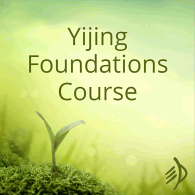
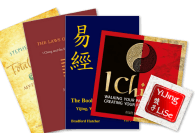
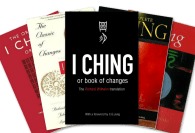
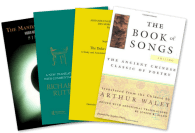
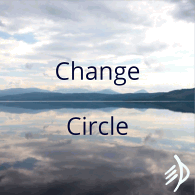

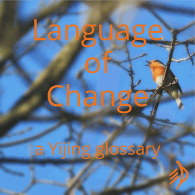
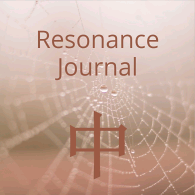


The teaching is good and explains the real spirit
I Ching connections are very deep and endless!
This is so helpful